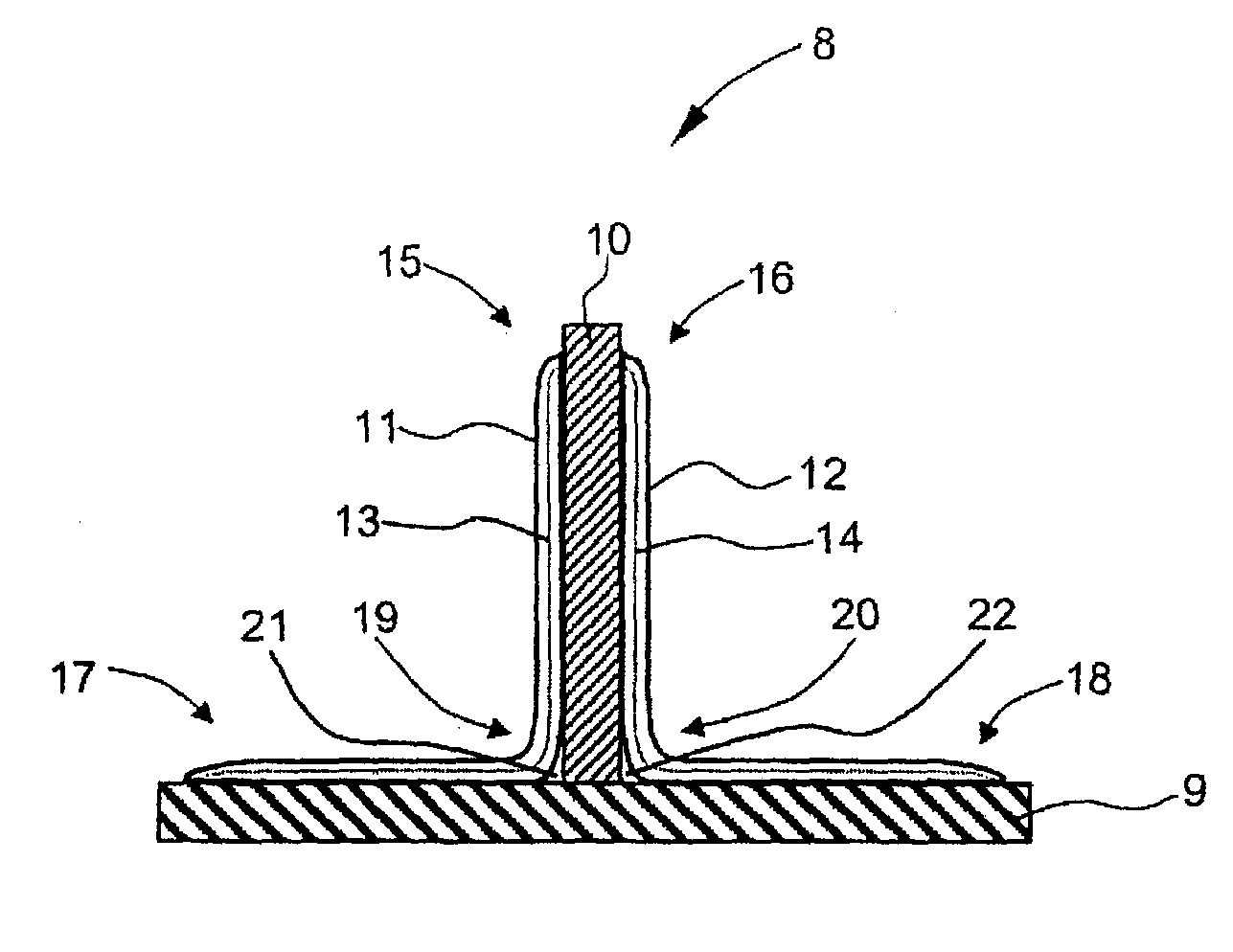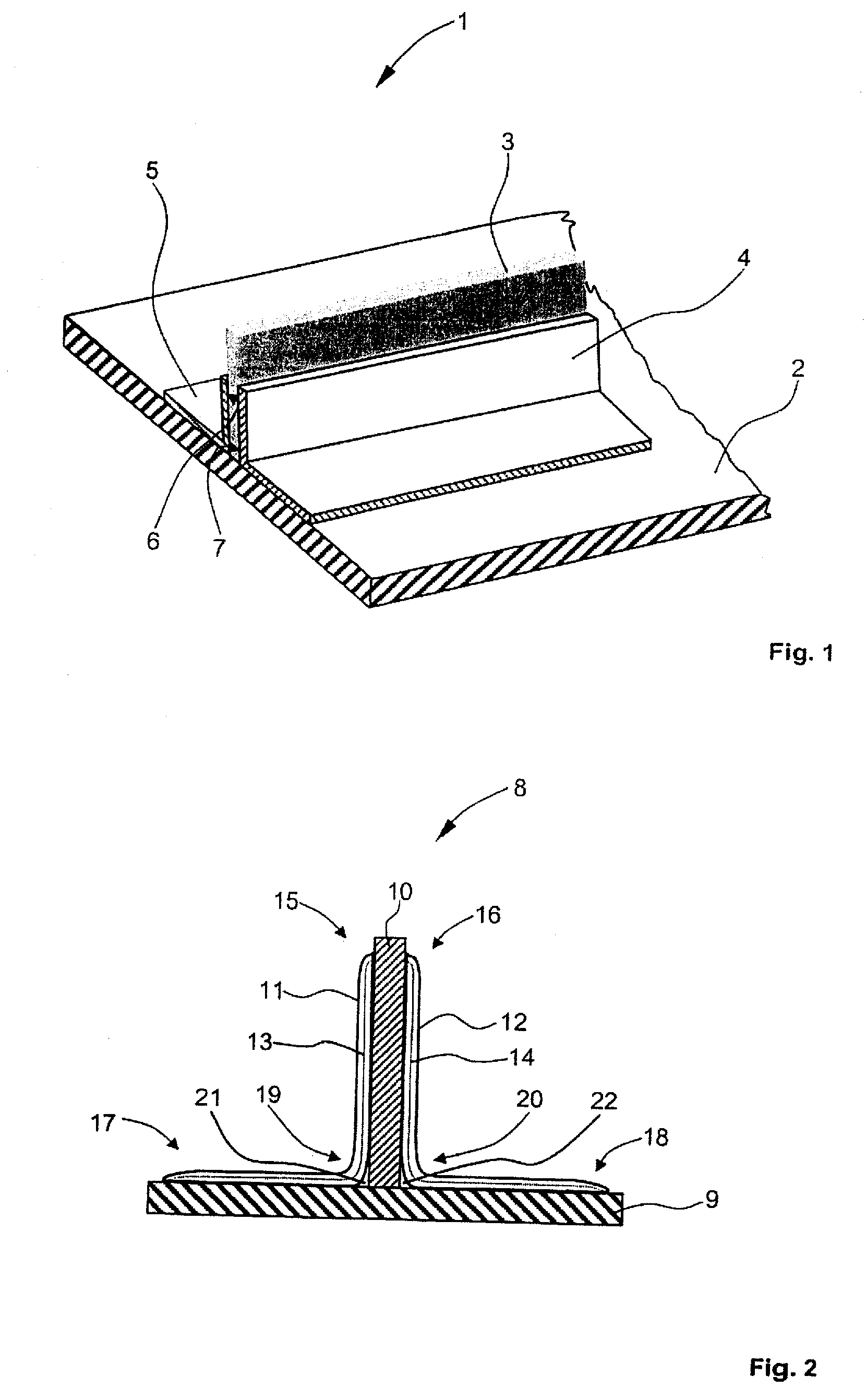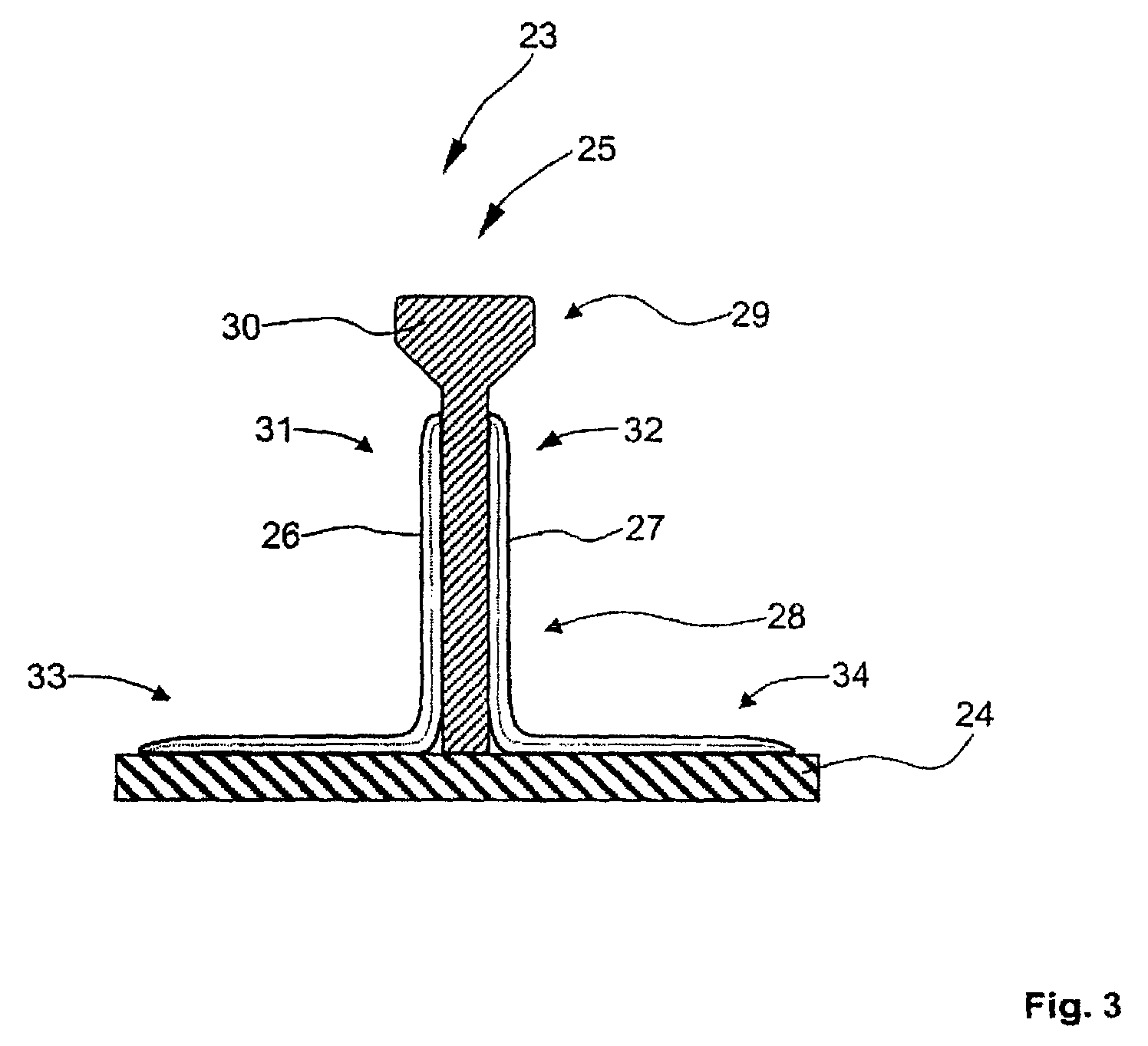Method for manufacturing a reinforced shell for forming component parts for aircraft and shell for component parts for aircraft
a technology for aircraft and components, applied in the field of shell manufacturing, can solve the problems of limited shelf time of pre-repairs, disproportionally high costs, and not-yet-cured components, and achieve the effect of simplifying the manufacture of shells
- Summary
- Abstract
- Description
- Claims
- Application Information
AI Technical Summary
Benefits of technology
Problems solved by technology
Method used
Image
Examples
first embodiment
[0025]FIG. 1 shows a partial perspective view of a shell with a stiffening element that has been attached in accordance with the present invention.
[0026]A shell 1 comprises a shell skin 2, a stiffening element 3 as well as connecting elements 4 and 5. As shown in FIG. 1, the stiffening element 3 has a substantially rectangular cross-section. However, the stiffening element 3 may also have other cross-sectional shapes. The connecting elements 4 and 5 are connecting angle pieces with a substantially L-shaped cross-section. The shell skin 2, the stiffening element 3 and the connecting elements 4 and 5 are made of a plurality of semi-finished parts in the form of curable prepregs. The prepregs are carbon fiber reinforced sheet-shaped members, that are soaked or impregnated with a curable epoxy resin. In their non-cured state, virtually any geometric shape can be imparted on the prepregs. Thus, using prepregs as semi-finished parts, shell skins or stiffening elements with L-shaped cross-...
second embodiment
[0043]FIG. 3 shows a partial cross-sectional view of a shell, onto which a stiffening element is placed, in accordance with a
[0044]The shell 23 is provided with a shell skin 24, onto which at least one stiffening element 25 is attached with connecting elements 26 and 27 arranged on either side in accordance with an inventive method. In contrast to the stiffening element 10, the stiffening element 25 does not have a rectangular cross-section. In a lower region 28, the stiffening element 25 has a rectangular shape, whereas in an upper region 29, it is provided with a widening section 30. The widening section 30 enables a higher flexural rigidity of the stiffening element 25. Due to the widening section 30 arranged in the upper region 29, it may be necessary to make the legs 31, 32 shorter than the legs 33, 34 of the connecting elements 26, 29. Other details of FIG. 3 correspond to those shown in FIG. 2, so that their further description has been omitted.
[0045]In accordance with one as...
PUM
| Property | Measurement | Unit |
|---|---|---|
| pressures | aaaaa | aaaaa |
| temperature | aaaaa | aaaaa |
| temperature | aaaaa | aaaaa |
Abstract
Description
Claims
Application Information
 Login to View More
Login to View More - R&D
- Intellectual Property
- Life Sciences
- Materials
- Tech Scout
- Unparalleled Data Quality
- Higher Quality Content
- 60% Fewer Hallucinations
Browse by: Latest US Patents, China's latest patents, Technical Efficacy Thesaurus, Application Domain, Technology Topic, Popular Technical Reports.
© 2025 PatSnap. All rights reserved.Legal|Privacy policy|Modern Slavery Act Transparency Statement|Sitemap|About US| Contact US: help@patsnap.com



